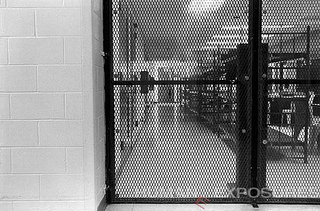A study released in July 2014 from the Office of Juvenile Justice and Detention Prevention revealed that incarcerated youth die by suicide at a rate two to three times higher than that of youth in the general population, that 10.3% of juvenile detainees thought about suicide in the past six months and that 11% had attempted suicide.
The study, conducted with 1,829 Illinois Juvenile detainees, also found that: a) more than one-third of male juvenile detainees and nearly half of female juvenile detainees felt hopeless or thought a lot about death or dying in the six months prior to detention, b) recent suicide attempts were most prevalent in female detainees and youth with anxiety disorders and c) fewer than half of detainees with recent thoughts of suicide had told anyone about those thoughts.
In 2013 the Centers for Disease Control and Prevention reported that at a rate of 10.5 per 100,000 adolescents, measured in 2010, suicide was the third-leading cause of death in youth between 15 and 24. Youth suicide has nearly doubled since 1950, increasing at a faster rate than among adults age 25 and older.
Incarcerated youth frequently have characteristics commonly associated with increased risk for suicide, such as high rates of psychiatric disorders and trauma, as well as separation from loved ones, crowding, sleeping in locked rooms and solitary confinement.
Youth detention centers should and could easily screen new inmates for suicide risk, which is critical for prevention. A 2004 national study of 79 suicides among incarcerated and detained youth found that more than two-thirds of the victims had made prior attempts, reported suicidal thoughts, made suicidal threats or physically harmed themselves. So corrections staff may be able to significantly reduce the rates of suicide in detention if they can identify youth at risk for suicide.
The 2010 study refealed that 44.2% of juvenile female inmates sometimes felt life was hopeless, 31.5% thought a lot about death or dying in the past half-year, 10.5% had a specific suicide plan in the past six months and 27.1% had attempted suicide at some time (and this was 42.8% among non-Hispanic whites).
Within their lifetimes, 283 of the 1,829 participants in the study had attempted suicide: 26.9% by cutting (50.7% of white females), 23.8% via drug overdose (43.1% of Hispanic females), 20.7% by jumping (39.9 of Hispanic and 22.7% of African-American males), 9.5% by hanging (11.6% of black males) and 3.7% by firearms (5.2% of white females).
Psychiatric disorders significantly associated with a recent suicide attempts included generalized anxiety disorder, overanxious disorder, major depression, oppositional defiant disorder, panic disorder, obsessive-compulsive disorder, psychotic disorder, separation-anxiety disorder, alcohol use disorder, conduct disorder, dysthymia and other substance use disorder. In an analysis that included gender, age, and race/ethnicity along with all of the disorders that were individually associated with the suicide attempt, generalized anxiety disorder and overanxious disorder significantly increased the odds of having made a recent suicide attempt.
The study also found that suicidal thoughts and behavior appear to be most prevalent in U.S.-born Hispanic females from traditional Hispanic families, who may find it difficult to cope with contrasting social role expectations at home and among peers.
A striking finding of this study was that:
Hispanic males who attempted suicide were more likely to use a firearm than African American or non-Hispanic white males. This finding is of particular concern because half of all completed suicides of young men in the general population involve firearms.
Juvenile detention centers often provide the first opportunity to screen youth for suicide risk and to provide interventions, yet most facilities do not currently perform adequate screening for emergent risk. A 2005 study found that facilities that screen all juveniles within 24 hours of arrival had lower prevalence rates of serious suicide attempts than those that screen only juveniles considered at risk for suicide.
The study urges that psychiatric services in detention facilities must be increased. The Office of Juvenile Justice and Delinquency Prevention’s biennial Juvenile Residential Facility Census reported that 43% of juvenile residential facilities do not assess all youth for mental health needs.
The study declares:
But youth with psychiatric disorders, especially anxiety, may be at particular risk for suicide attempts. Detention center staff should be trained to recognize anxiety disorders in detainees and should refer affected youth for psychiatric services. By competently assessing and treating psychiatric disorders in detained youth, facilities will prevent untimely deaths.










